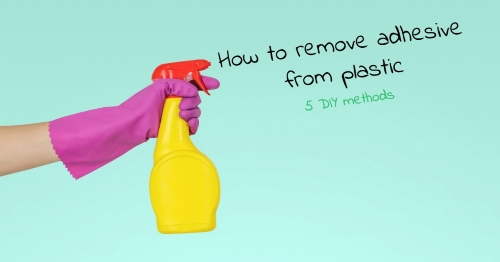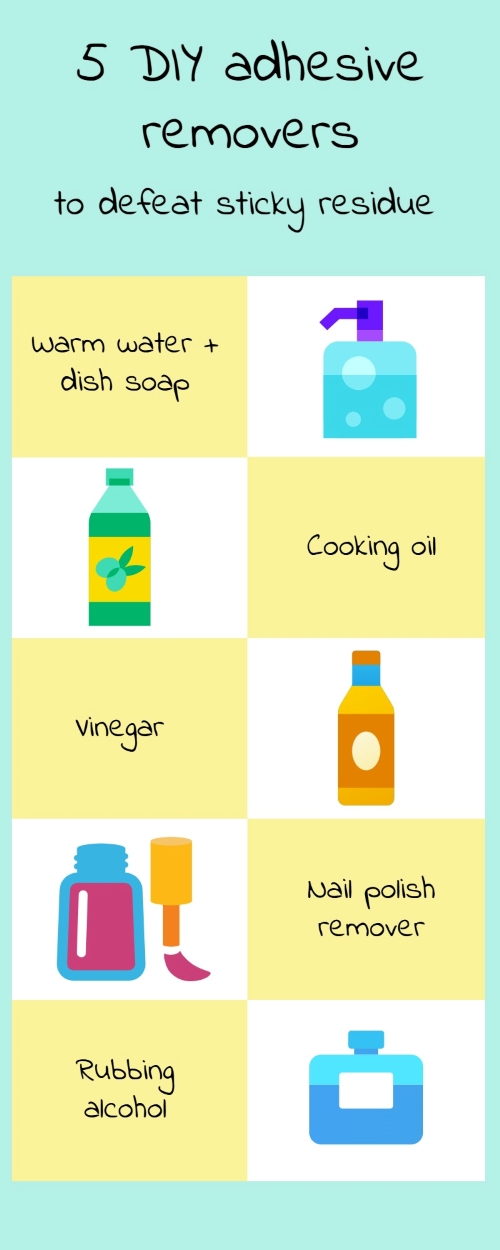Email: [email protected]

Sticky labels are a fact of modern life, so it’s important to know how to remove adhesive from plastic. While label removal can be tricky on any material, plastic surfaces are often the most stubborn when it comes to the leftover adhesive residue.
Luckily, there are some DIY adhesive removers you might already have at home. Here are five ways to get rid of sticky glue residue:
The combination of warm water and dish soap works wonders for a wide variety of household messes, glue residue included. Fill a large bowl with warm or hot tap water and add liquid dishwashing soap. Submerging the object works best, but you can also apply the soapy solution with a sponge to break down the adhesive bonds.
Cooking oil is another DIY adhesive remover you already have in your kitchen. Canola oil, olive oil, avocado oil or any other oil you cook with are gentle solutions for removing sticky residue. Simply apply a dab of oil to a paper towel or cotton ball and apply it to the affected area. In about ten minutes, you should be able to remove glue residue quickly and easily.
Vinegar is a superstar substance for home cleaning remedies, and it also works well to remove sticker residue. While vinegar will dissolve the sticky stuff, it’s harmless to most plastics. However, avoid using vinegar to remove adhesive from rubber surfaces, as the acidity can cause damage.
The active ingredient in nail polish remover is acetone, a powerful chemical that can break down even the toughest acrylic paints and lacquers. While nail polish remover can be too harsh for some plastics, tougher grades like polypropylene are strong enough to withstand the acetone. Check for a number 5 recycling symbol to make sure your plastic is acetone safe.
Rubbing alcohol is a standard disinfectant found in most household first aid kits. However, its cleaning properties also dissolve sticker residue within minutes. Soak a piece of paper towel or cotton ball in isopropyl alcohol and place it on the sticky patch. In about five minutes, you should be able to wipe away the remains of any glue residue.

If none of these methods work on your sticky residue situation, you can always try a store bought adhesive removal solution. Check your local hardware or craft store to find the best option for your cleaning project.

Teresa's beginnings were at Fort Belvoir, Virginia. She was child #5 of 8 and born into an Air Force family that moved all over the United States but usually ended up back in the Washington, D.C. area. Teresa attended Miami University in Oxford, Ohio and received her bachelor's degree in business from George Mason University, in Fairfax, Virginia. Some of her prior careers include: computer buyer in Fairfax, Virginia; Deputy Clerk at the U.S. District Court in Denver, Colorado; Police Officer in Steamboat Springs, Colorado; and Bed & Breakfast owner in Stowe, Vermont. Teresa obtained her license as a Realtor® in 1998. She has been through many ups and downs in this profession and continues to learn every day. She very much enjoys the real estate profession and the wonderful people she has met and assisted along the way. In order to serve her clients and customers, Teresa continually attends classes and seminars. Some of her Designations and Certifications include:
Teresa has also served and continues to serve on several boards:
In 2007, Teresa was named Vermont Realtor of the Year.Teresa and her husband, a local attorney, moved to Stowe in 1987. They had two sons and Stowe has been their home for the past 36 years. She still feels the Stowe area is a wonderful place to raise a family, there's always something going on. Teresa can often be found behind the lens of her camera documenting the beauty of the area and its many events.As an update, Teresa's older son is now a Doctor/resident at the University of New Mexico's Emergency Management Program. Her younger son graduated from James Mason University and currently resides in Chicago, IL as a supervisor for OKTA.